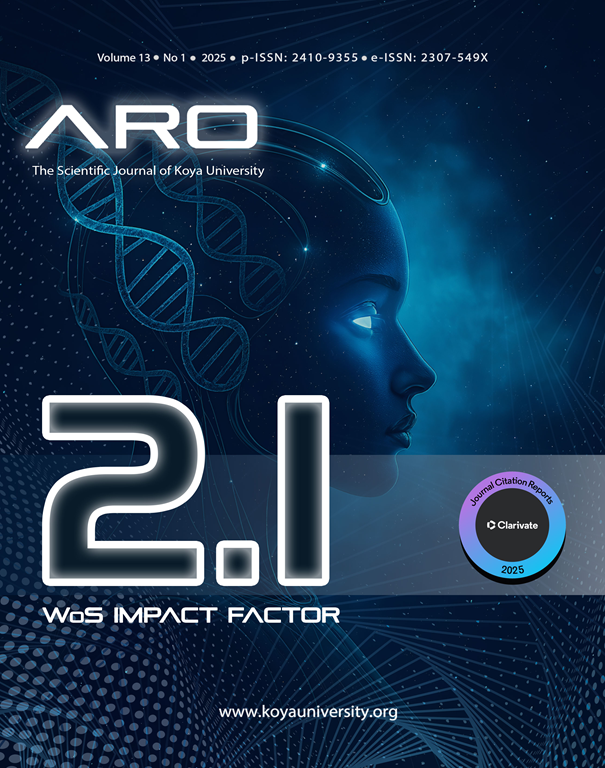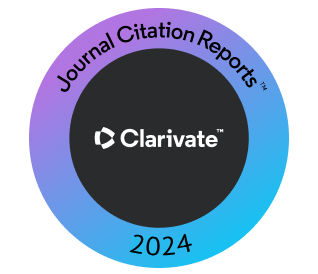Simulation of Flare Discharged from Oil Fields, Integration of Remote Sensing, Laboratory and Mathematical Models
DOI:
https://doi.org/10.14500/aro.11982Keywords:
Flare, Geographic information system, Heat diffusion, Remote sensing, Thermal imageAbstract
The prevailing practice in Iraq and the Middle East involves the flaring of gas into the atmosphere by a majority of oil and gas industries. This practice, however, is causing significant harm to the environment, personnel, and equipment. Consequently, determining the optimal location for the flare stack within an oil field has become a primary concern in the design of oil field processes. To address this issue, an in-depth analysis of the flame distribution from oil field flare stacks has been undertaken, focusing on assessing both the size and configuration of the flare. The investigation specifically concentrated on the diffusion of the heat around a flare discharged from a vertically positioned cylindrical pipe into the atmosphere. To facilitate this exploration, a geographic information system was used, and an environmental laboratory experiment was conducted using a scaled flare stack, allowing for measurements under various conditions. During this experiment, thermal images of the flare at different gas flow rates were captured and analyzed using MATLAB software to precisely measure the dimensions and shape of the flare. Consequently, predicting the shape and size of flare profiles becomes possible when key parameters, such as discharge gas flow rate, are known. The overarching objectives of this study are to forecast the shape and size of the flare as well as the diffusion zone, contributing to a more effective and environmentally friendly oil field process design.
Downloads
References
Adole, T., 2011. A GIS Based Assessment of the Impacts of Gas Flaring on Vegetation Cover in Delata State [MSc Thesis]. University of East Anglia, Nigeria.
Ali, J.A., 2014. Two-dimensional modeling of oil fields flare. Academic Journal of Science, 3(2), pp.299-308.
Ali, J.A., and Kodakarami L.A., 2014. Investigations of flare gas emissions in Taq Taq oil field on the surrounding land. ARO the Scientific Journal of Koya University, 2(2), pp.15-19. DOI: https://doi.org/10.14500/aro.10023
Avdan, U., and Jovanovska, G., 2016. Algorithm for automated mapping of land surface temperature using LANDSAT 8 satellite data. Journal of Sensors, 2016, p.1480307. DOI: https://doi.org/10.1155/2016/1480307
Barsi, J.A., Schott, J.R., Hook, S.J., Raqueno, N.G., Markham, B.L., and Radocinski, R.G., 2014. Landsat-8 thermal infrared sensor (TIRS) vicarious radiometric calibration. Remote Sensing, 6, pp.11607-11626. DOI: https://doi.org/10.3390/rs61111607
Bello, T., and Ogunjemilusi, G., 2022. Gas Flaring and the Assessment of the Legal Framework Governing It. Available from: https://ssrn.com/abstract=4137527 DOI: https://doi.org/10.2139/ssrn.4137527
Chowdhury, S., Shipman, T., Chao, D., Elvidge, C.D., Zhizhin, M., and Hsu, F., 2024. Daytime Gas Flare Detection Using Landsat-8 Multispectral Data. In: 2014 IEEE Geoscience and Remote Sensing Symposium, Quebec City, QC, Canada, 2014, pp. 258-261. DOI: https://doi.org/10.1109/IGARSS.2014.6946406
Dollah, O.C., Weli, V.E., and Eludoyin, O.S., 2023. Spatial analysis of land cover dynamics across gas flaring sites in Rivers State. Journal of Research in Environmental and Earth Sciences, 9(10), pp.22-28.
Faruolo, M., Genzano, N., Marchese, F., and Pergola, N., 2022. A tailored approach for the global gas flaring investigation by means of daytime satellite imagery. Remote Sensing, 14, p.6319. DOI: https://doi.org/10.3390/rs14246319
Faruolo, M., Genzano, N., Marchese, F., and Pergola, N., 2023. Multi-temporal satellite investigation of gas flaring in Iraq and Iran: The DAFI porting on collection 2 Landsat 8/9 and sentinel 2A/B. Sensors, 23, p.5734. DOI: https://doi.org/10.3390/s23125734
Heimerl, J., Malki, M.L., and Mehana, M., 2023. Flaring volumes in the intermountain west region: A geospatial analysis of satellite and operator-reported data with viable mitigation strategies. Environmental Research, 236(Pt 1), p.116729. DOI: https://doi.org/10.1016/j.envres.2023.116729
Ibañez-Gómez, L.F., Albarracín-Quintero, S., Céspedes-Zuluaga, S., Montes-Páez, E., Ando Junior, O.H., Carmo, J.P., Ribeiro, J.E., Moreira, M.M.A., Siqueira, A.A.G., and Guerrero-Martin, CA., 2022. Process optimization of the flaring gas for field applications. Energies, 15(20), p.7655. DOI: https://doi.org/10.3390/en15207655
International Energy Agency IEA, 2023, Global Methane Tracker 2023. IEA, Paris. Available from: https://www.iea.org/reports/global-methane-tracker-2023
Ismail, O.S., and Umukoro, G.E., 2016. Modelling combustion reactions for gas flaring and its resulting emissions. Journal of King Saud University Engineering Sciences, 28, p.130-140. DOI: https://doi.org/10.1016/j.jksues.2014.02.003
Khodakarami, L., Pourmanafi, S., Mokhtari, Z., Soffianian, A.R., and Lotfi, A., 2023. Urban sustainability assessment at the neighborhood scale: Integrating spatial modellings and multi-criteria decision making approaches. Sustainable Cities and Society, 97, p.104725. DOI: https://doi.org/10.1016/j.scs.2023.104725
Khodakarami, L., Pourmanafi, S., Soffianian, A.R., and Lotfi, A., 2022. Modeling spatial distribution of carbon sequestration, CO2 absorption, and O2 production in an Urban area: Integrating ground‐based data, remote sensing technique, and GWR model. Earth and Space Science, 9, p.1-22. DOI: https://doi.org/10.1029/2022EA002261
Khodakarami, L., 2024. Spatial modeling of micro‐scale carbon dioxide sources and sinks in urban environments: A novel approach to quantify urban impacts on global warming. Greenhouse Gases: Science and Technology, 14(3), pp. 470-491. DOI: https://doi.org/10.1002/ghg.2273
Morakinyo, B., Lavender, S., and Abbott, V., 2022. Investigation of potential prevailing wind impact on land surface temperature at gas flaring sites in the Niger Delta, Nigeria. International Journal of Environment Geoinformatics, 9(1), pp.179-190. DOI: https://doi.org/10.30897/ijegeo.968687
Ndunagu, P.N., Joel, O.F., and Oji, A.A., 2021. Comparative analysis of satellite and regulatory based gas flare volumes in the Niger Delta region. Nigerian Journal of Technological Development, 8(4), pp.279-287. DOI: https://doi.org/10.4314/njtd.v18i4.3
World Bank, 2020. Global Gas Flaring Reduction Partnership (GGFR). Available from: https://www.wb-ggfr-report-july2020.pdf
Downloads
Published
How to Cite
Issue
Section
License
Copyright (c) 2025 Jafar A. Ali, Loghman Khodakarami, Brosk F. Ali

This work is licensed under a Creative Commons Attribution-NonCommercial-ShareAlike 4.0 International License.
Authors who choose to publish their work with Aro agree to the following terms:
-
Authors retain the copyright to their work and grant the journal the right of first publication. The work is simultaneously licensed under a Creative Commons Attribution License [CC BY-NC-SA 4.0]. This license allows others to share the work with an acknowledgement of the work's authorship and initial publication in this journal.
-
Authors have the freedom to enter into separate agreements for the non-exclusive distribution of the journal's published version of the work. This includes options such as posting it to an institutional repository or publishing it in a book, as long as proper acknowledgement is given to its initial publication in this journal.
-
Authors are encouraged to share and post their work online, including in institutional repositories or on their personal websites, both prior to and during the submission process. This practice can lead to productive exchanges and increase the visibility and citation of the published work.
By agreeing to these terms, authors acknowledge the importance of open access and the benefits it brings to the scholarly community.
Accepted 2025-04-06
Published 2025-05-08
















 ARO Journal is a scientific, peer-reviewed, periodical, and diamond OAJ that has no APC or ASC.
ARO Journal is a scientific, peer-reviewed, periodical, and diamond OAJ that has no APC or ASC.